European Auto Market | Norway May 2025: Tesla's Resurgence
![]() 06/19 2025
06/19 2025
![]() 463
463
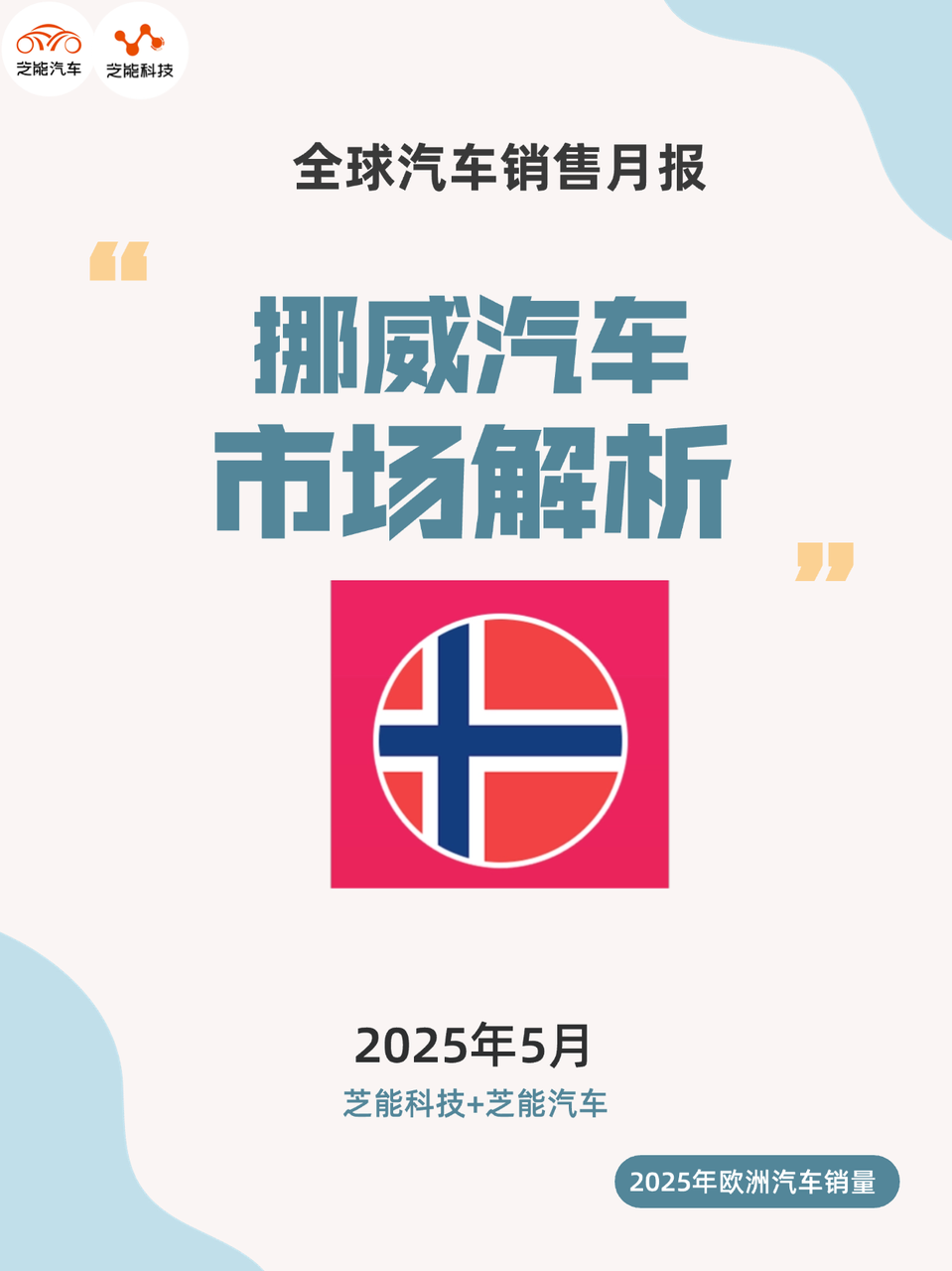
In May 2025, new car sales in Norway surged 39.1% year-on-year, reaching 14,260 units. Pure electric vehicles accounted for nearly 94% of sales, far surpassing the global average, while the share of traditional internal combustion engine vehicles continued to decline.
Tesla made a strong comeback, reclaiming the monthly sales crown. German brands showed mixed performances, while Chinese brands expanded across multiple dimensions, with several new entrants successfully entering the mainstream market.
We delve into the development trends and competitive dynamics in the Norwegian market from two perspectives: the overall market landscape and the performance of Chinese brands.
01
Overview of the Norwegian Market:
EVs Absolutely Dominate, Tesla's Resurgence
In May 2025, new car registrations in Norway hit 14,260 units, a 39.1% year-on-year increase, setting a new May record since 1986. Cumulative sales from the start of the year reached 57,142 units, up 30.6% year-on-year, indicating a sustained and robust recovery in the nation's auto market.
In terms of propulsion systems, the Norwegian market continues to accelerate its transition towards full electrification:
◎ Pure electric vehicles (BEVs) commanded 93.9% of the market, far exceeding the 77% recorded in the same period in 2024;
◎ Plug-in hybrid electric vehicles (PHEVs) and hybrid electric vehicles (HEVs) fell to 1% and 3.5%, respectively;
◎ Traditional diesel and gasoline vehicles have nearly vanished from the mainstream market, accounting for only 1.2% and 0.4%, respectively.
This signifies that Norway not only leads the world in its electrification transition but is also raising the market threshold, with only a select few brands capable of meeting consumers' preference for "electric-first" vehicles.
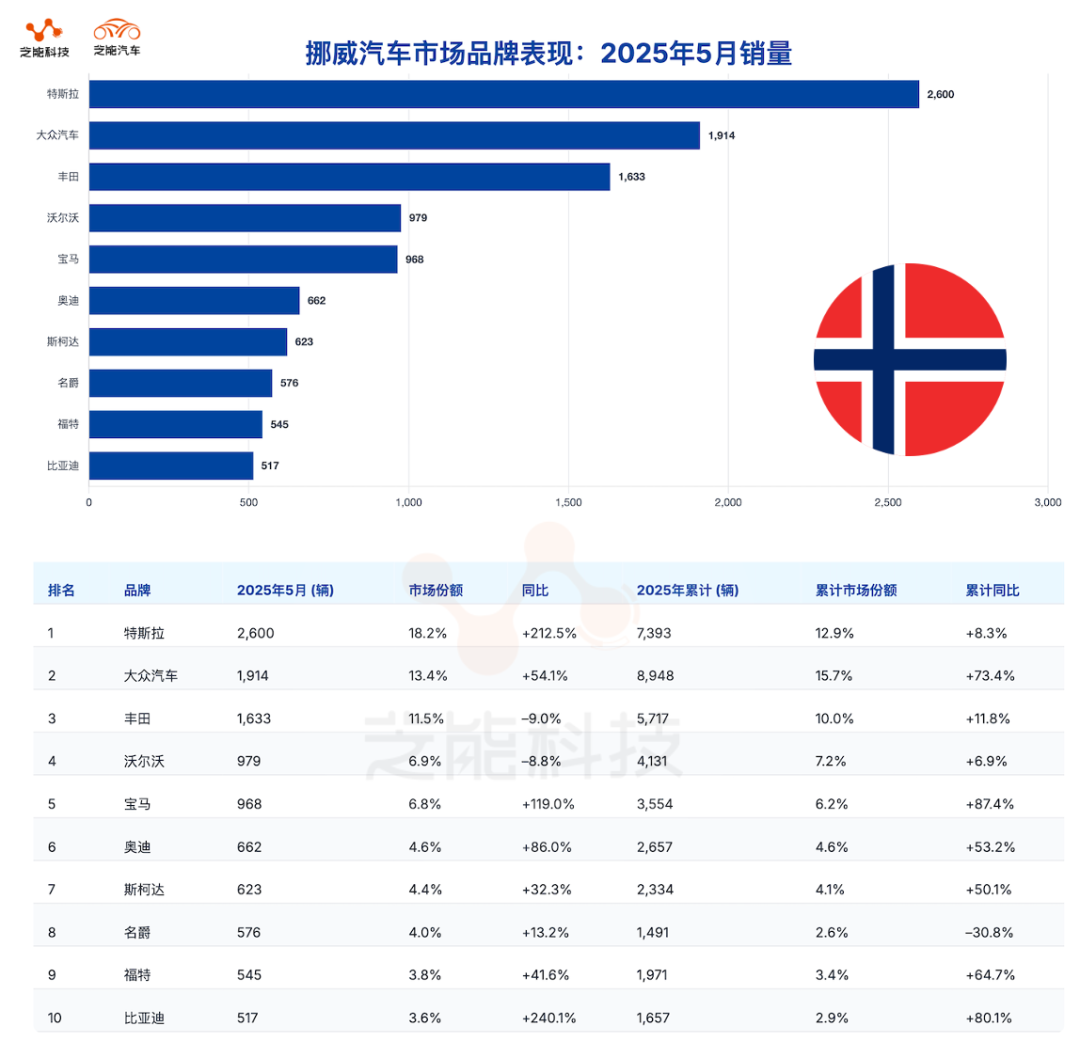
From a brand perspective:
◎ Tesla's sales soared to 2,600 units in the month, a 212.5% year-on-year increase, capturing 18.2% of the overall market and reclaiming the top spot from Volkswagen. Boosted by the launch of the new Model Y, which secured a 16.5% market share, Tesla's best performance since August last year, the brand's cumulative share for the year has turned positive at 12.9%.
◎ Volkswagen ranked second with 1,914 units but still leads in cumulative market share at 15.7%.
◎ Toyota ranked third with 1,633 units, down 9% year-on-year, while its flagship model, the bZ4X, surged to second place in the monthly model rankings with a 132% increase.
◎ Volvo and BMW ranked fourth and fifth, respectively, with BMW exhibiting strong growth of 119% year-on-year, highlighting a robust product renewal strategy.
◎ Among luxury brands, Audi and Mercedes-Benz also achieved notable growth of 86% and 76.6%, respectively.
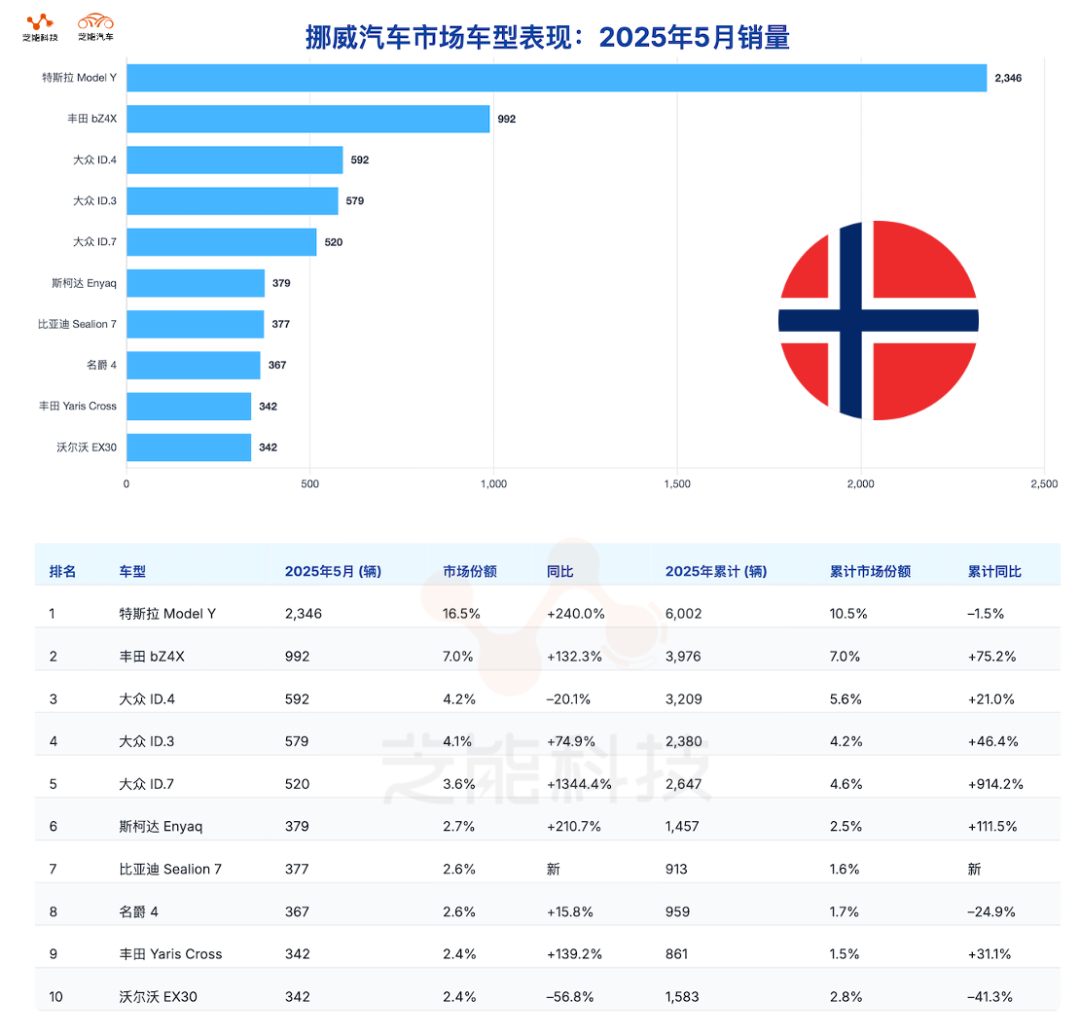
From a model perspective:
◎ Tesla's Model Y remains the market leader, outpacing other models by a significant margin.
◎ Toyota's bZ4X overtook Volkswagen's ID.4 to claim second place, thanks to continuous growth, while the latter fell 20% year-on-year.
◎ Volkswagen retains an advantage with a broad product line, with the ID.3 and ID.7 ranking fourth and fifth, respectively, and the latter experiencing astonishing growth of 1344% year-on-year.
◎ Skoda's Enyaq also entered the top six with a 210.7% increase.
◎ Notably, BYD's new model, the Seal 7, debuted in the top ten, delivering impressive performance.
In terms of drivetrain, the penetration rate of four-wheel-drive models continues to rise, increasing from 65.1% in the same period last year to 76.5%, indicating that Norwegian consumers still place great importance on winter drivability and performance.
Overall, the Norwegian auto market in May 2025 exhibited the following key trends:
◎ EV penetration rates further approached the limit, with non-electric models becoming marginalized;
◎ Brand competition intensified, with Tesla making a strong comeback and Volkswagen maintaining a high position;
◎ Luxury brands drove growth through electrification strategies;
◎ Diversified product lines emerged as the key to success, with platform capabilities highlighting competitive advantages;
◎ Chinese brands emerged as a significant variable in the new round of growth.
02
Chinese Brands in Norway:
From "Testing the Waters" to "Establishing a Foothold"
In May 2025, Chinese brands shone brightly in the Norwegian market, particularly in an environment with high EV penetration, where several automakers swiftly rose in market status due to their technological and pricing advantages.
◎ BYD ranked tenth in the brand rankings with 517 units sold, up 240.1% year-on-year, and cumulative sales of 1,657 units, up 80.1% year-on-year.
BYD's newly launched Seal 7 leaped to seventh place in the sales rankings in May, demonstrating that its product design, technology, and pricing are highly aligned with local market demand. BYD is accelerating its localization efforts in terms of product launch rhythm and market strategy, with its channel system gradually improving.
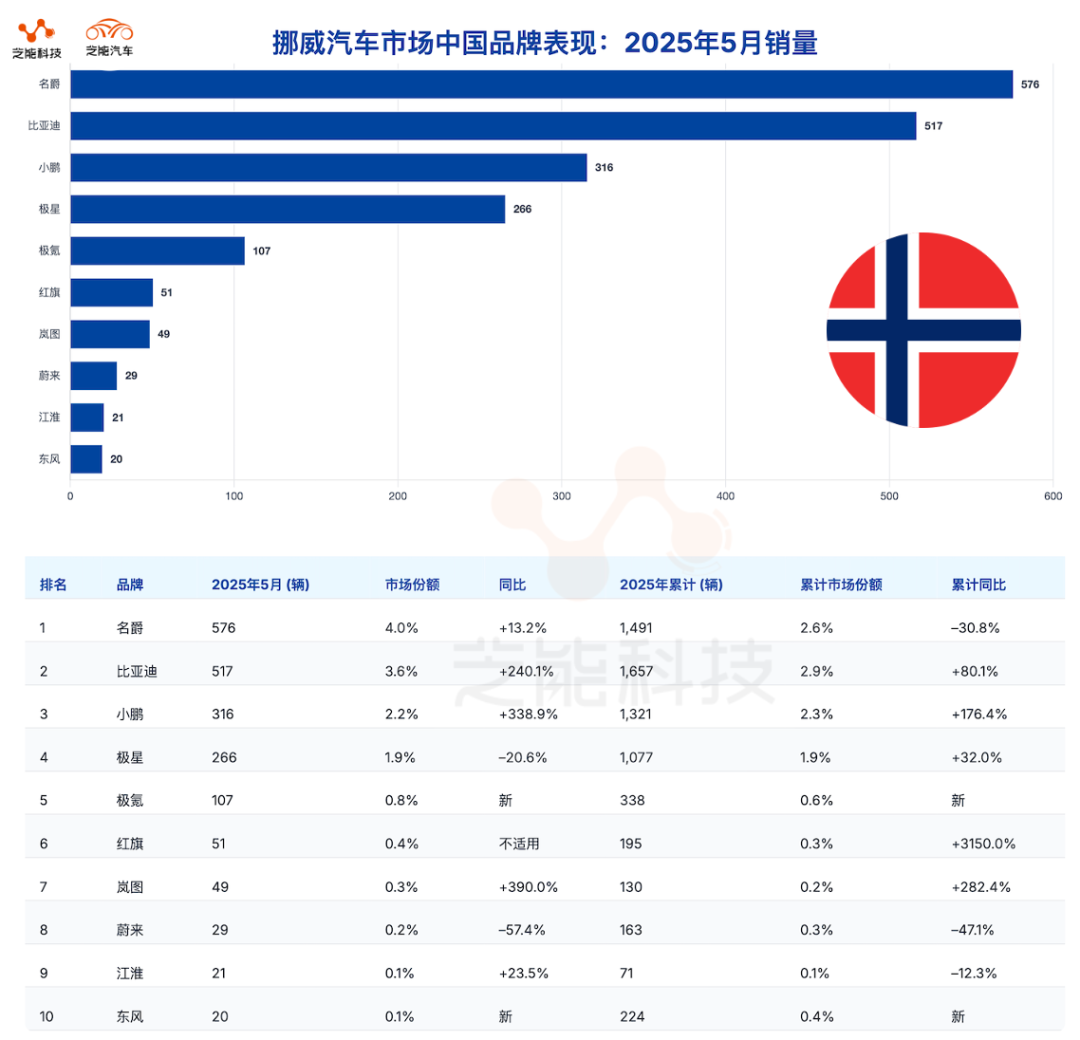
◎ XPeng ranked 14th with 316 units sold, up 338.9% year-on-year, and its cumulative sales for the year surged 176.4% year-on-year. Despite starting from a low base, its growth rate indicates that XPeng is gradually gaining recognition and acceptance among European users, particularly due to its differentiated advantages in smart cockpits and assisted driving.
◎ ZEEKR entered the top 20 of the brand rankings for the first time with 107 units sold, ranking 23rd. Although still in the initial promotion stage, its models align closely with European users' tastes in terms of design language and driving experience, indicating significant potential.
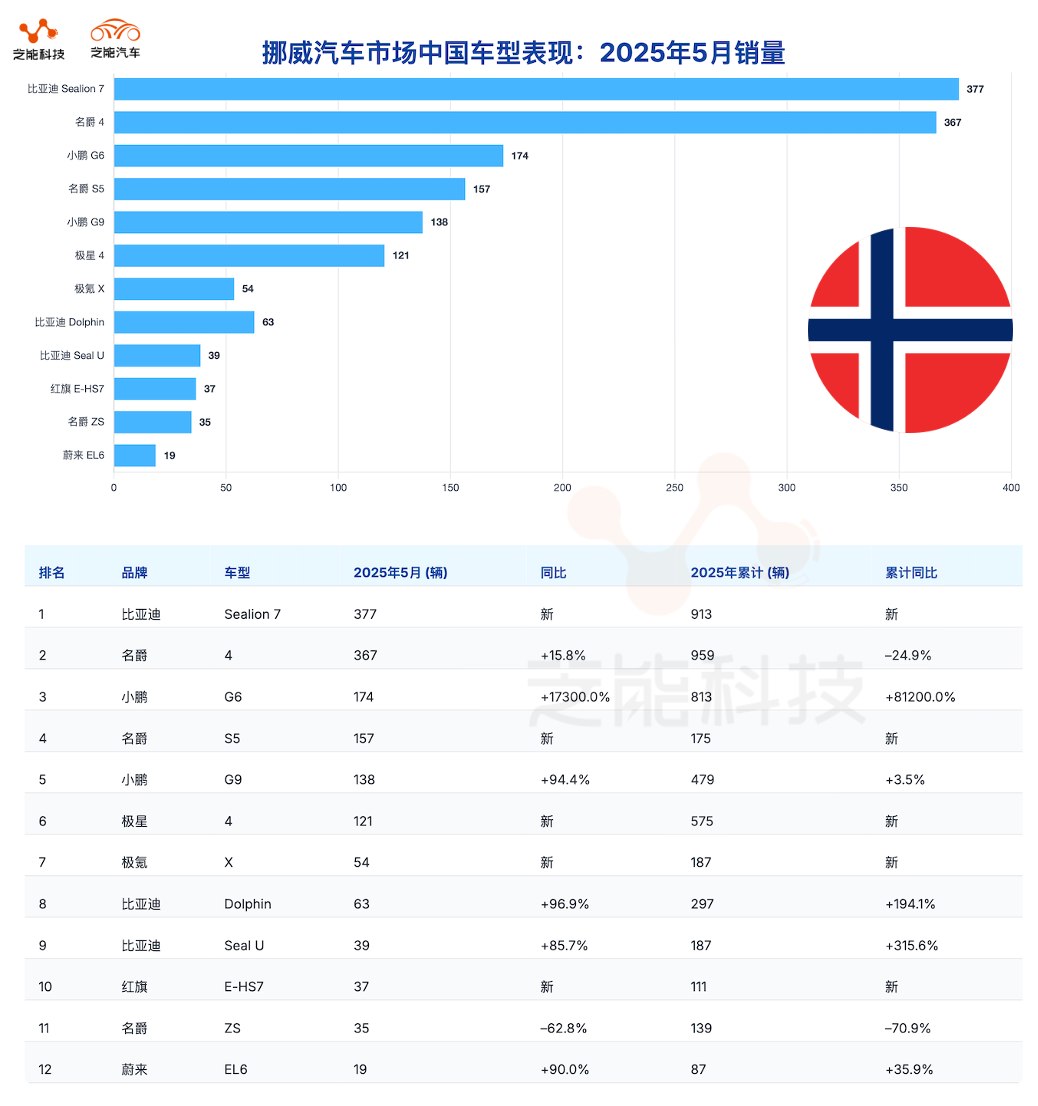
◎ Brands such as Hongqi, Voyah, and Dongfeng also appeared on the list with modest sales volumes, particularly Hongqi, which witnessed a staggering 3150% year-on-year increase, indicating that it is exploring breakthroughs in the high-end market despite a low base. Voyah sold 49 units, up 390% year-on-year, starting to gain traction.
◎ JAC, Nezha, Thalys, and SAIC MAXUS are still in the initial stages of market expansion.
◎ On the other hand, NIO sold only 29 units this month, down 57.4% year-on-year, with cumulative sales of 163 units, down 47.1% year-on-year. This reflects challenges it faces in the high-end market competition, potentially related to pricing strategies, channel coverage, and after-sales support. As a brand renowned for its brand premium and service experience, NIO's long-term success in Europe will necessitate deeper localization efforts.
The performance of Chinese brands in Norway exhibits a trend of "three highs and one low": high growth, high starting point, high technological differentiation, and low base.
◎ First-tier brands such as BYD and XPeng are rapidly closing the gap with traditional automakers;
◎ Second-tier brands like Hongqi and ZEEKR are focused on establishing a high-end image;
◎ Some new entrants are still in the testing phase.
Achieving stable sales in a highly mature market with a strong preference for electric vehicles is a long-term challenge that Chinese brands must consider.
Summary
Norway serves as the most thoroughly electrified sample market globally, and its market performance holds significant indicative value for future global trends. The market is recovering robustly, with electric vehicles continuing to dominate overwhelmingly. Tesla and Volkswagen compete fiercely in product innovation and capacity allocation, while luxury brands regain vitality through their electric transformation. For Chinese automakers, Norway represents both a formidable challenge and a promising opportunity.






